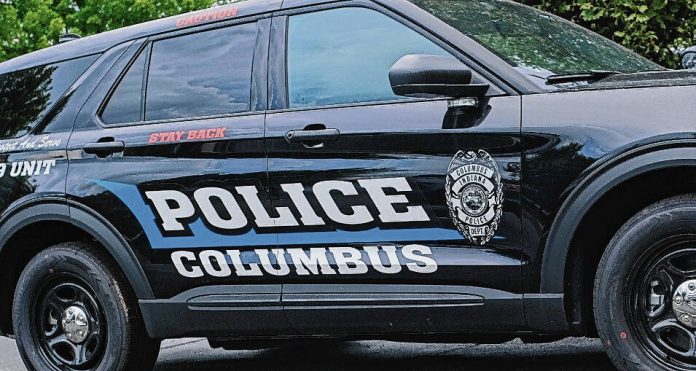
Photo by Mike Wolanin | The Republic A Columbus Police Department squad vehicle with new updated vehicle wrap.
The Columbus Police Department has updated its general order on use of force to be aligned with the latest statewide training and accreditation standards, including an expansion of an internal board that reviews use of force incidents.
The Columbus Board of Public Works and Safety voted to approve the changes.
The updates came from recommendations by the Commission on Accreditation for Law Enforcement Agencies (CALEA) and policies mandated by the Indiana Law Enforcement Training Board (LETB).
More specifically, the order updated section 4.1.2 regarding the use of deadly force and section 4.3.3 establishing a LETB-required defensive tactics training policy.
LETB and CALEA collaborated on the verbiage of the policies, according to Police Chief Steve Norman.
“We’ve had a couple of statewide policy mandates come from the Indiana Law Enforcement Training Board that says we have to do these,” Norman said “… So there’s two parts to that, that’s our use of force policy and our training policy.”
The updated 4.1.2 includes sections that outline: procedures for de-escalation, when police vehicles are to be used as a weapon, an officer’s duty to intervene when another officer uses excessive force and steps an officer should follow after being involved in a use of force incident.
It replaces the previous General Order 4, which has been in effect since November 2020.
Section 4.3.3’s defensive tactics training policy requires that all officers “attend training course(s) that train a minimum of one approved technique listed in the Training Program in each of the mandatory categories listed above, within a two year training cycle, to fulfill the mandatory defensive tactics in-service training requirement.”
There are 14 approved categories of techniques including strikes, handcuffing, defensive ground fighting and others.
A change Norman also pointed to is the expansion of CPD’s Use of Force Board, which was expanded from one person to five.
“We have a use of force review board, which is one person. I’m not sure that one set of eyes is enough for that,” Norman said. “So what we’re doing is asking to add four more sets of eyes so that we have five people reviewing each of our use of forces.”
The board will be comprised of two defensive tactics instructors, a taser instructor, and two uniformed officers, one a sergeant and the other a patrol officer, Norman said.
After reviewing a specific incident, the board has options to vote that: the use of force was lawfully justified, adheres to all policies; lawfully justified, does not adhere to all polices; not lawfully justified, does not adhere to all policies.
The Use of Force Board’s findings are then reviewed by the Board of Captains, who determine the appropriate course of action.
“If an officer is found to have violated the law, policy or a combination of the two, the Board of Captains will determine if discipline and or additional training is suggested,” the policy reads.
CPD has received certification from CALEA since 2014. Accreditation is an ongoing four-year process where the department must show that it follows international guidelines for policing and organizational practices.
“They decide what the best practice is for law enforcement to put out to their officers,” Norman said. “…There was a lot of anxiousness initially, but once you figured out what it is and what it does, it has paid dividends for our department and set our policy, our expectations and a lot of what we need to be doing.”
Norman said the department is up for CALEA reaccreditation next year.
“The recognition is there is more scrutiny, people have higher standards and CPD wants to have the highest standards that we can,” Mayor Mary Ferdon said.




